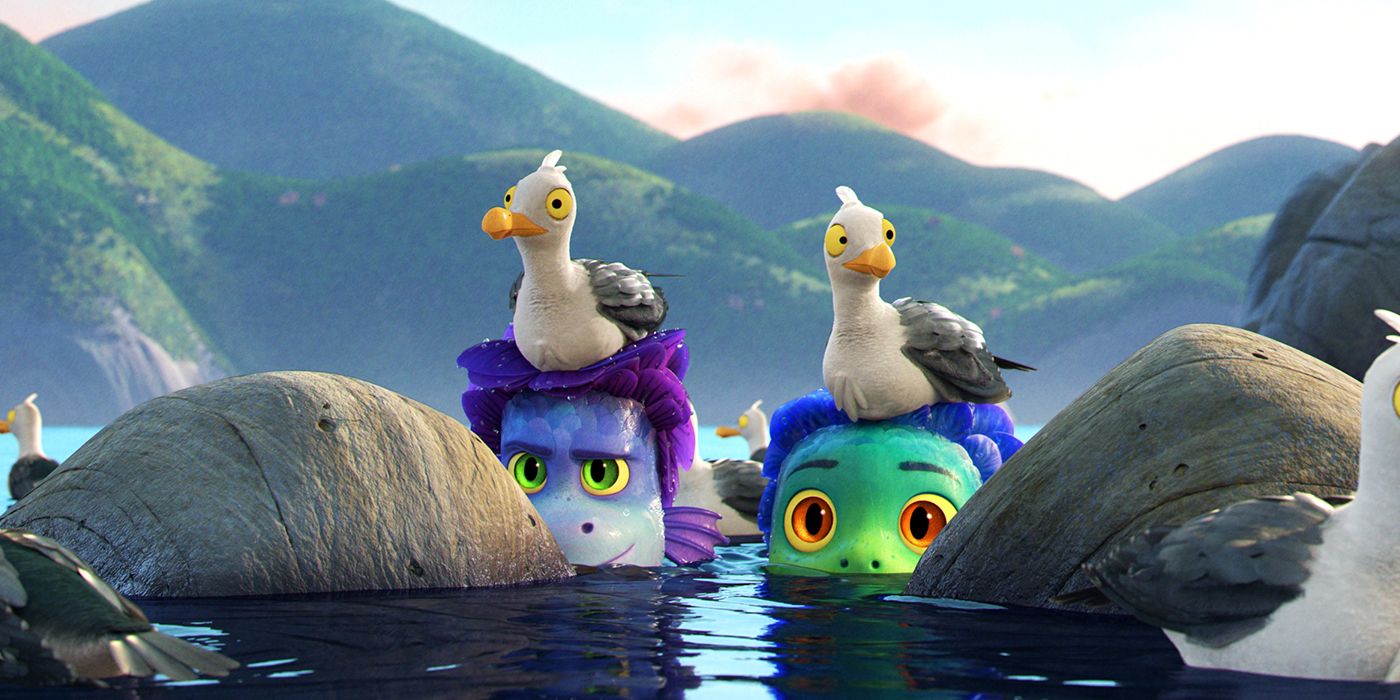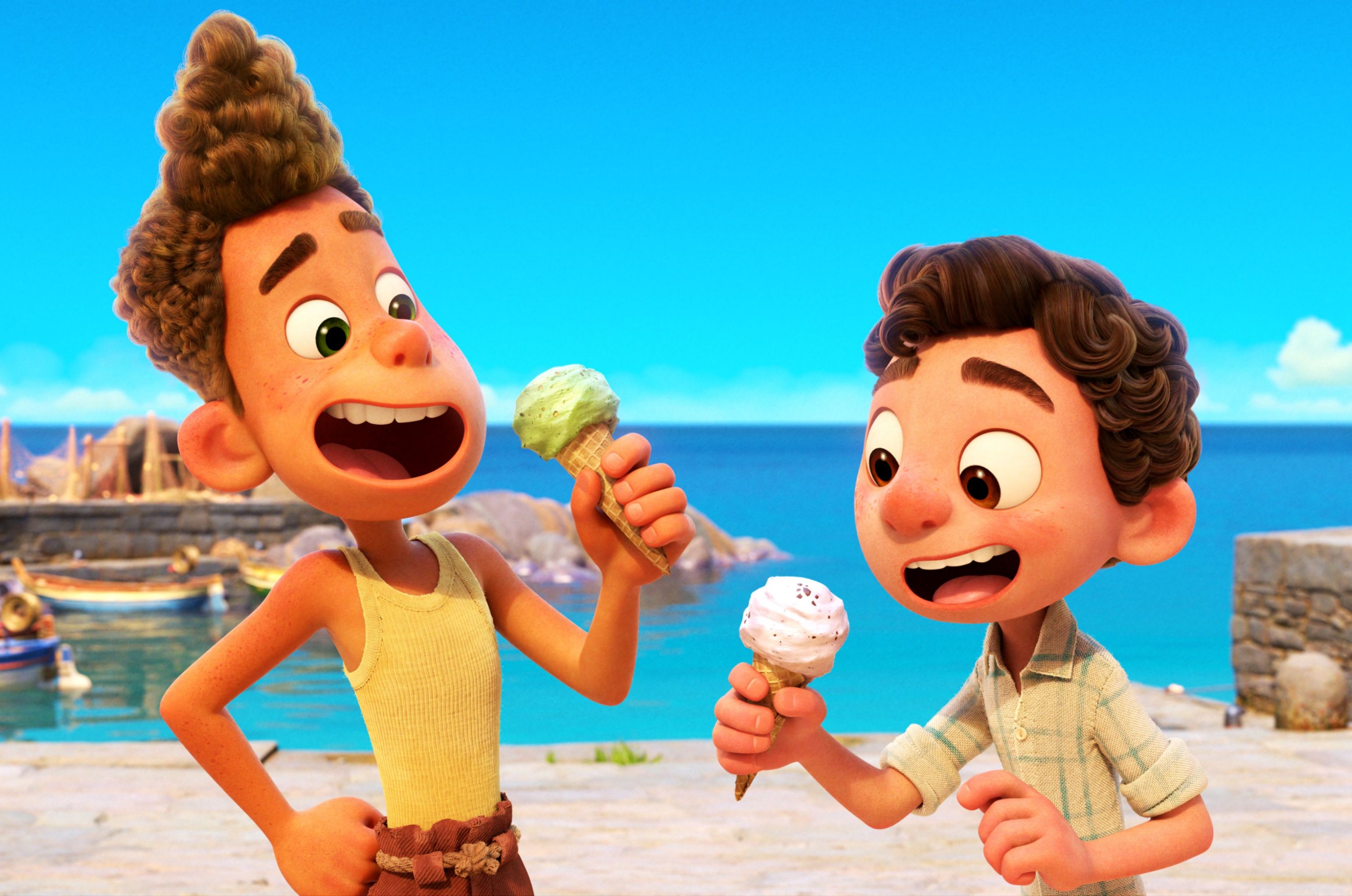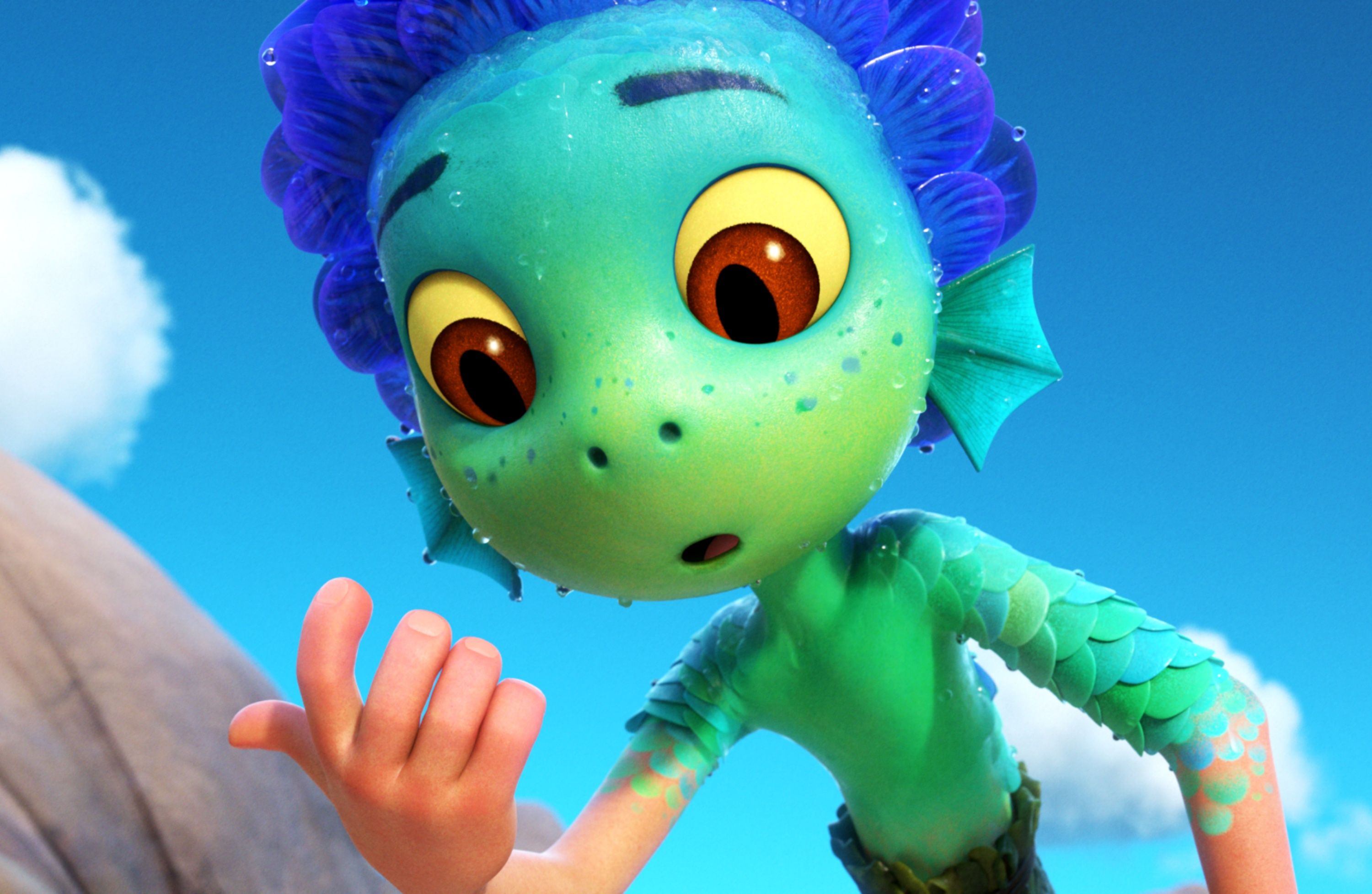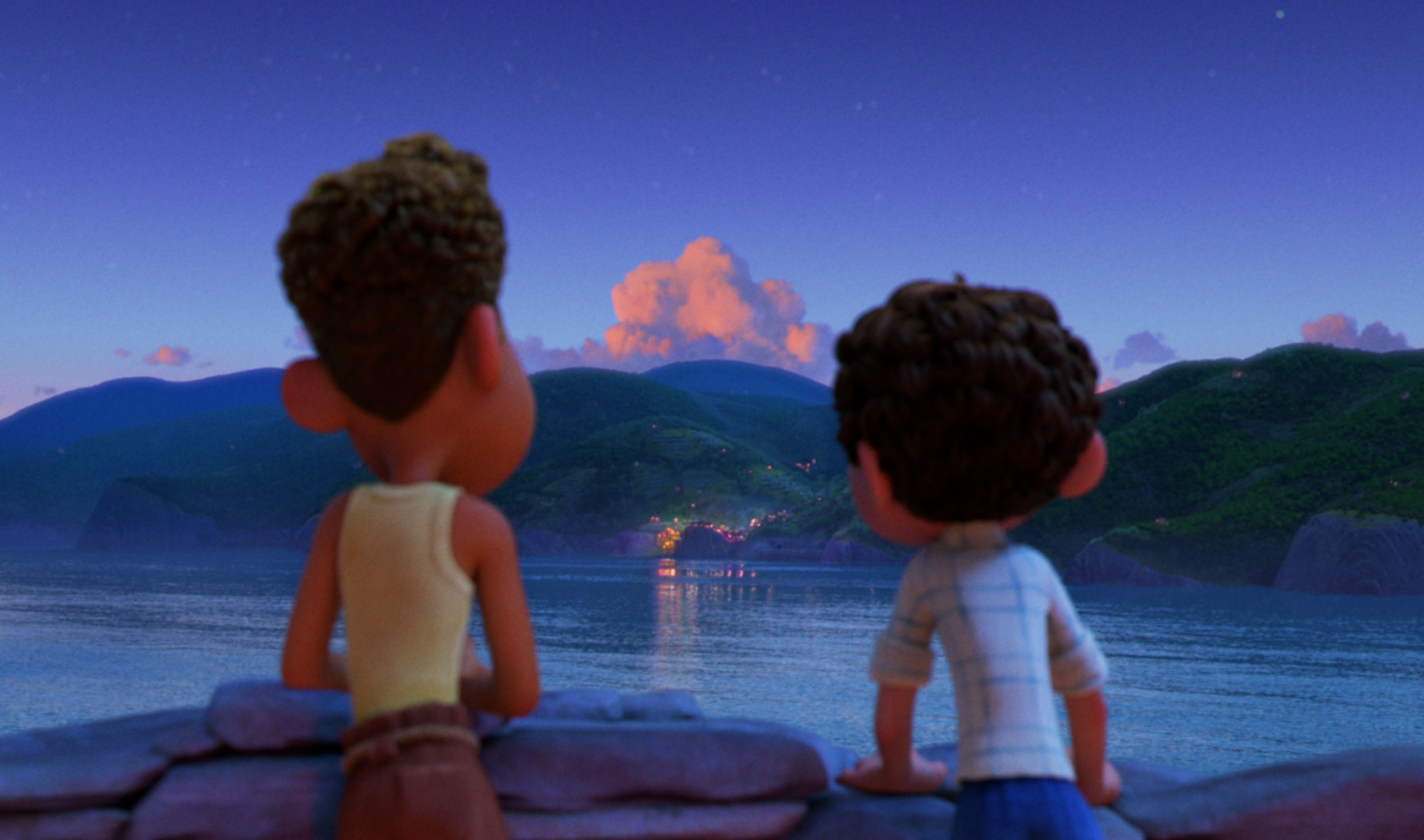Directed by Enrico Casarosa (La Luna), the Disney and Pixar animated feature Luca follows a young boy (voiced by Jacob Tremblay) as he experiences an unforgettable summer alongside his new best friend (voiced by Jack Dylan Grazer) in a beautiful seaside town on the Italian Riviera. But all of the pasta, gelato and scooter rides in the world can’t hide the fact that they’re sea monsters from a world below the water’s surface and that the discovery of their secret could be very dangerous.
During an early virtual press day to get a glimpse behind the scenes of what it took to make the film, Collider got the opportunity to chat 1-on-1 with animation supervisor Mike Venturini about why he just wants audiences to have fun while they’re watching Luca, having to customize a style of animation that worked for this story, the technical challenges in animating characters that change from sea monsters to humans (and are sometimes both at once!), what he learned from working on Space Jam early on in his career, how he ended up at Pixar, and what makes this story so relatable.
Collider: You work for a long time on an animated project, before audiences ever get to see the film. After having worked on this for awhile now and having to work during a pandemic, what are you most excited about, with it finally coming out and people actually getting to see it in June?
MIKE VENTURINI: I’m excited for people to have fun. That’s what I’m super excited about. And I think this film’s packed with fun. My favorite thing about the film is that (director) Enrico [Casarosa] wanted us to see the world through a kid’s eyes. A lot of our films, we see the world through adult eyes and with a level of maturity. This has a level of immaturity, which I think really sets the stage for just fun and fantastic. There’s naiveness, in really charming ways. There’s the gullibility of kids who don’t really know how the world works, being out on their own and seeing it for the first time. Right now, I’m excited to send out into the world a little bit of charming naiveness and fun.
As press, we get to see some of the behind the scenes work that goes into these projects and what it takes to bring everything together in every department, but audiences don’t get to see that, they just get to have fun with the finished product. What would you want them to know about the amount of work it takes and the blood, sweat, and tears involved in pulling something like this off?
VENTURINI: I actually don’t want him to know anything about that. What I want them to know is that we had as much fun making this one as you’re gonna have watching it. My experience working with the animators was, when this movie was done, the feedback was, “I don’t wanna stop working on this. I’m having so much fun. This is one of the best films I’ve worked on at Pixar.” And that’s for people that have worked at Pixar for 10 or 15 years. There was something special about this film and this time that we’re in, where being able to depart from reality for the sake of having fun was important. These are animators that I’ve worked with for years and I could see them just pouring fun into their work. That’s what I want people to know. This wasn’t a hard project. This was a fun project.
When this first came up, what was the initial idea for it and did that change a lot, as you were working on animating it?
VENTURINI: I’ve been on this film for about two years, which means that I got involved a couple years into the process when they started to lock the story down. How much it changed from its original idea, I’m not a hundred percent sure. With this film, there were parts of the film that just always worked and those were the ones we started working on while they were figuring out the rest of the story, and so we really didn’t have to double back and change anything. Now in the story department, they were doubling back and changing a lot, but that’s what they always do on films.
You’ve talked about the custom style of animation for this and how it’s a bit of a departure from what you normally do. Why did that suit this specific project? How would you say this is inspired by 2D animation?
VENTURINI: There were a lot of reasons. The first one is Enrico’s stylistic artistic vision for this film. They created designs and art that were stylized and simplified in ways that we knew we couldn’t do realistic animation with. We had to come up with a style of animation that was stylized, as well. And then, when we started looking into some of the films that influenced Enrico in his youth, which were 2D films, and we started to understand what was stylized about them, we tried to incorporate some of those details. But then, another thing was that Enrico talked about this experience he had, where he went back to visit a playground from his youth. His memories of the playground were the giant jungle gym and the huge slides, but when he saw it as an adult, it was this tiny little playground. Your memory as a child, the world is so big, and that’s what he wanted this film to be. He wanted it to be through the eyes of the kids, where the world is so big. So, we knew the style of the animation had to be big. Everything had to feel a little bit larger than life, so we wanted to push it in a different way that wasn’t rooted so much in an adult reality.
What’s it like to have to animate characters that change into see monsters in the water and are humans out of the water, and sometimes they’re partially both of those things?
VENTURINI: There are a lot of technical challenges to that, which we were able to overcome with some of the technology that we developed with our animation software. From a performance standpoint, you have to double your knowledge. It takes a long time for an animator to ramp up on a film and get to know how to animate the main character. But when you have to get to know how to animate that main character twice, in two different versions of themselves, it’s double the work. With our humans, the style of animation on land is snappier and a little bit more pose to pose. In the water, it’s a little more graceful and fluid. You can’t just snap and hold the pose in the water. We had to come up with different styles of animation, for human or sea monster. What we found over time, working on the film, was that some animators felt more comfortable in the fluid underwater world, and stylistically the bold, snappy style of animation was more difficult for them. Other animators felt more comfortable in the cartoony stylistic world and had a harder time with the fluid sea monsters. They started to gravitate, and by the end of the film, you knew that these animators were really good with the sea monsters and these animators were really good with the humans.
You worked on Space Jam early in your career. What did you learn from something like that, that’s such a very unusual kind of project? How weird is it to then see that there’s now a sequel for that movie, at this point in your career?
VENTURINI: I know! Part of me was like, “I need to work on the sequel,” just because that was where it all started for me. I feel like I owe that franchise the wonderful career I’ve had. To be honest, when I started on that, I was a clean-up in-betweener, just doing in-between drawings, wide-eyed and like, “Oh, my God, I can’t believe I have a job in animation and I’m drawing Bugs Bunny, of all characters. This is blowing my mind.” I remember that, every time I’m working with a new animator at our studio. Every summer, we have interns that go through our internship, and if they’re fortunate to stay on and work on a feature film or a project after that, they’re wide-eyed and they can’t believe they’re at Pixar, animating on a film. I love seeing that. It reminds me of when I had that opportunity.
How did you end up getting into animation and being at Pixar? Was that always a career goal for you, or was it a more unexpected route?
VENTURINI: When I got into animation, Pixar didn’t exist. When I made the decision to come to Pixar, there were two reasons. Probably the biggest reason was that I got into animation because I loved drawing. As I became an animator, I realized that I love the challenge of acting in an animated film, but I wasn’t a good enough draftsman and my acting ideas were better than my drawing ability and I was being held back by my limits in draftsmanship. So, when the opportunity to come to Pixar came along, it was at the time I was deciding, why am I an animator? Because I love to draw all day, or because I love performing? I had to make that choice. That was my crossroad, and I chose performing. Pixar was an opportunity to remove my own personal limitation of my drawing ability and just focus on performance. That’s what led me to Pixar. Coincidentally, it was this at the same time that Brad Bird was coming up to Pixar, and I’d worked with him on The Iron Giant. I had an opportunity to come up here with his good recommendation, at the same time that he came.
Do you also have the goal to someday move into directing for film, or do you want to stay in the actual animating of it?
VENTURINI: I love animation. I only ever wanted to be an animator. I love making animation. I love helping people make animation. If you have a film that you wanna make, I’m the guy that can help you get it animated. That’s what I love doing.
In what ways would you say that you most deeply connect to this story of Luca and that you think audiences will connect to?
VENTURINI: We all have that part of ourselves we hide from the world because we’re afraid of what people might think. For Luca, that’s very literally his sea monster self. I think that’s relatable. I was also a shy, introverted kid who was curious, so I can relate in that sense. That’s what I love about him, as a character. What I love about this, as a film, is that I love 2D animation and I’ve grown to love 3D animation, and this is an opportunity to combine some of the best of both worlds to make a style of animation for this film. I love this movie for that.
Luca is available to stream at Disney+ on June 18th.




